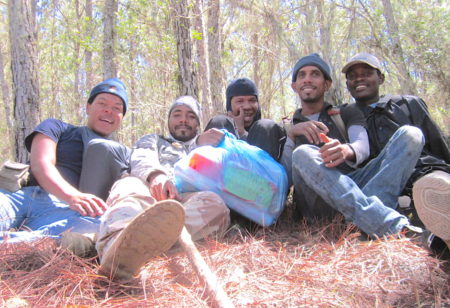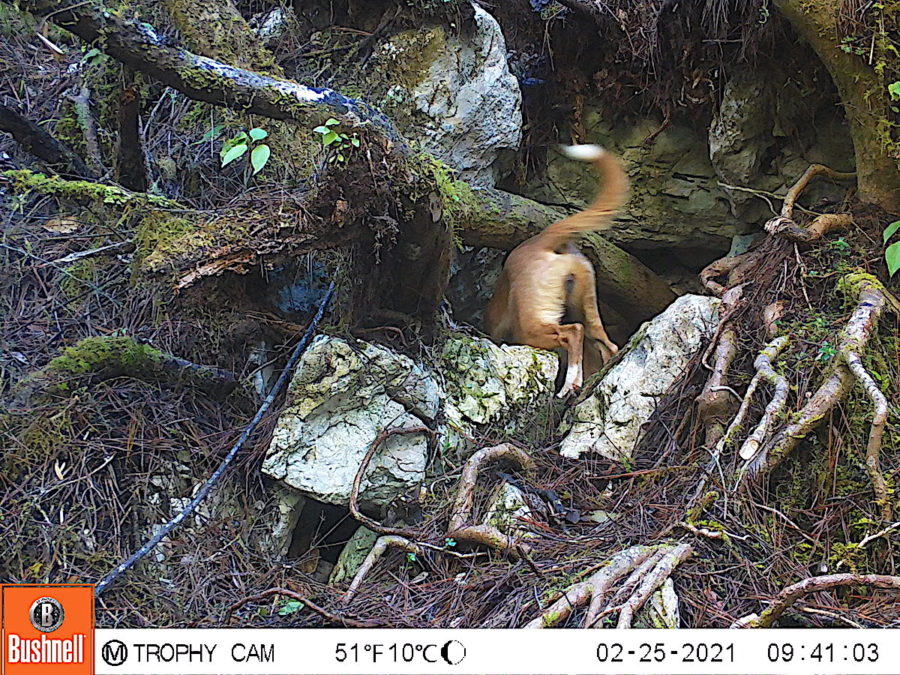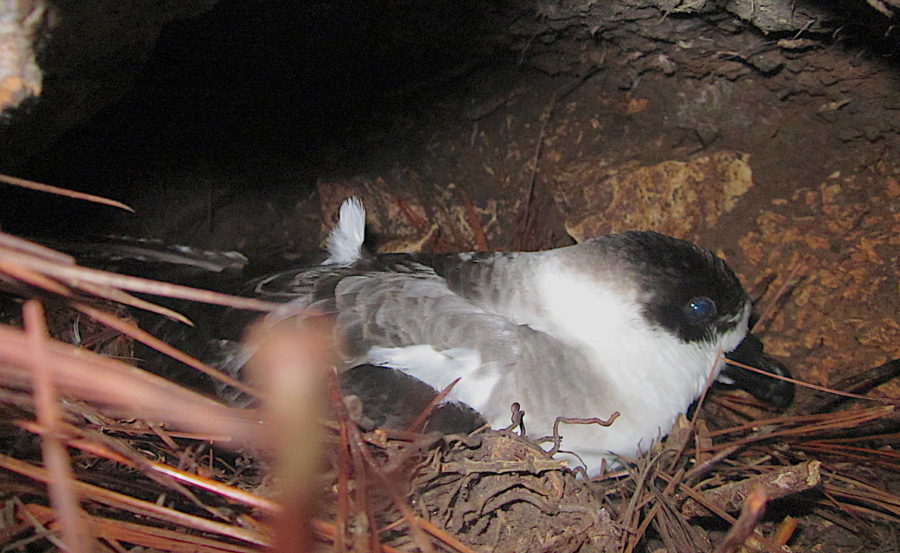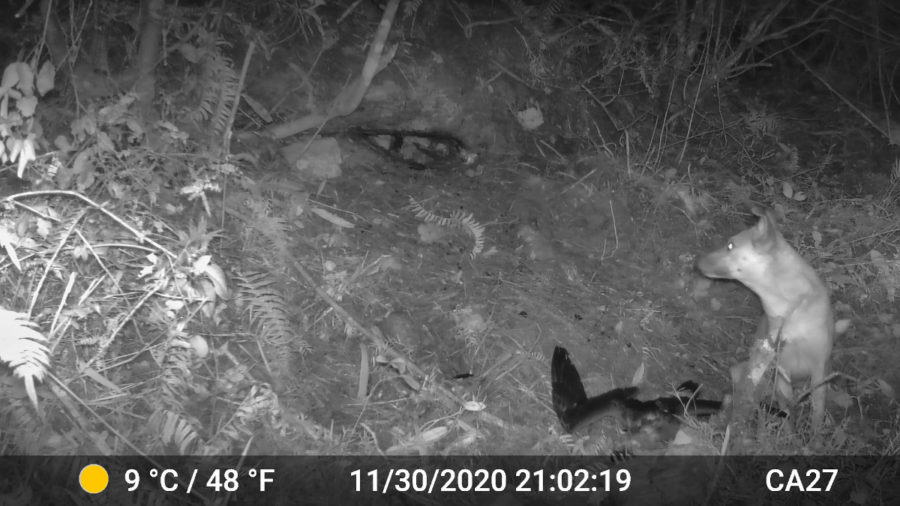
Jennifer Wheeler of the International Black-capped Petrel Conservation Group shares some shocking and sad news on the Black-capped Petrel in the Dominican Republic.
In mid-March 2021, researchers from the environmental organization Grupo Jaragua arrived at Loma del Toro, located in the Dominican Republic’s Sierra de Bahoruco National Park. The team’s mission was to check up on the Black-capped Petrel, an endangered seabird endemic to the Caribbean.
The trip to the field site was long and taxing, the final hours of bumpy travel up a steep, unpaved mountain road. Nevertheless, the team was in an upbeat mood, anticipating evidence of the first chicks to be hatched this year.
A shocking sight
Sadly, the researchers’ hopes were soon to be crushed. In the early morning, the forest of Hispaniolan pines that is home to the Black-capped Petrel nesting sites would normally have been full of life, with a noisy dawn-chorus of migrant and resident birds. Instead, the woods seemed a bit quieter than usual. When they reached the nesting sites, the team was met with a scene of carnage. The colony’s burrows were torn up, petrel feathers scattered around, and the remains of eggs and adult petrels dotted the ground. Predators had decimated the colony.
Analysis of camera traps at thirteen nests revealed that several dogs had been visiting the colony regularly since the end of November, and the depredations were the work of one particularly determined dog. This individual killed a minimum of seven adult petrels, likely more were attacked off camera.

Rare and vulnerable nesting sites
Only about 100 nests of the Black-capped Petrel have ever been located, after years of searching. These are all in the mountains on Hispaniola (the island comprised of Haiti and the Dominican Republic). Loma del Toro, in the Dominican Republic just east of the Haitian border, hosted 28 of them. Of the 28 known burrows, at least 22 were invaded by the dogs (based on camera traps, visual inspection of nests, and observation of carcasses.) Field teams expect that there were additional yet-to-be-found burrows in the area; these may have been affected as well.
The site has been monitored regularly since 2011. Adults claim burrows in November and December, and usually a high proportion (~70%) of chicks fledge from Loma del Toro in the summer months. There have been disappointments and setbacks before. In 2018, the presence of a cat resulted in the failure of nine nests at Loma del Toro. The loss of breeding adults and destruction of burrows, however, made this year’s scene especially tragic.

Introduced mammals – a destructive threat
Worldwide, animals introduced by humans – rodents, mongoose, cats, dogs, pigs – have devastated native island bird populations. The seabirds that evolved on islands free of mammalian predators are ill-equipped to withstand the pressure of animals evolved to take prey.
Not that Black-capped Petrels and other seabirds are helpless – these are tough birds that spend their lives in the winds and waves of the marine environment. Camera footage shows them battling each other as well as rats. However, seabirds are typically clumsy and slow on land, and nests on or in the ground are easily accessed by predators.
In an endangered species such as the Black-capped Petrel, any death of an adult can have extreme consequences for the health of the entire population. For this reason, the Conservation Action Plan currently being updated by the International Black-capped Petrel Conservation Group (IBPCG) identifies predation by introduced mammals as a key threat, and reduction of predator pressure as a top strategy. In fact, Grupo Jaragua’s deployment of multiple camera traps was a step in understanding the specifics of the threat at known colonies.

Tackling the challenges
What now? Of course, the park authorities in the Ministry of the Environment have been notified about the specific threat posed by the recently documented group of dogs. The International Black-capped Petrel Group (IBPCG) had already begun to pilot trapping activities for smaller predators such as rats and mongoose. It will also pursue the idea of restoring the Loma del Toro colony using buried nest structures (“artificial burrows”) to provide more secure nesting locations.
Reducing the predation pressure at Loma del Toro and other Black-capped Petrel colonies will be a challenge given the costs and logistics of operating in a remote, mountainous location. Accessing the Black-capped Petrel colonies can only be done by rough unpaved roads that take a heavy toll on the research teams’ trucks. Finally, the IBPCG must also combat the threats of fire, collisions, habitat loss and degradation from agricultural expansion, all while continuing to seek out and study the species in colonies elsewhere in the region.
The Working Group and partners fight on…
Yet, this group’s efforts have always been notable for the level of shared dedication and collaboration to benefit this special bird. The IBPCG has strategies in place to offset many of the conservation threats that the Black-capped Petrel faces annually; some have already shown positive outcomes for the species. The tragedy at Loma del Toro only strengthens the resolve of Grupo Jaragua and its IBPCG partners, which include BirdsCaribbean, the American Bird Conservancy, Environmental Protection in the Caribbean (EPIC) and others – to protect the species and allow it to thrive across its range.
…and need your support
The IBPCG continually strives to raise funds for its work. If you would like to contribute to keeping the Grupo Jaragua field team in the field and support the work to reduce predation pressure and other threats, please give directly to Grupo Jaragua at http://www.grupojaragua.org.do/apoyanos or you can route through a gift through BirdsCaribbean: http://bit.ly/GiftForCaribbeanBirds
More bad news! At press-time, a raging wildfire threatens the remaining birds and burrows of the Loma del Toro colony. We await more information…
To learn more about the Black-Capped Petrel, visit the Black-capped Petrel Working Group page.
